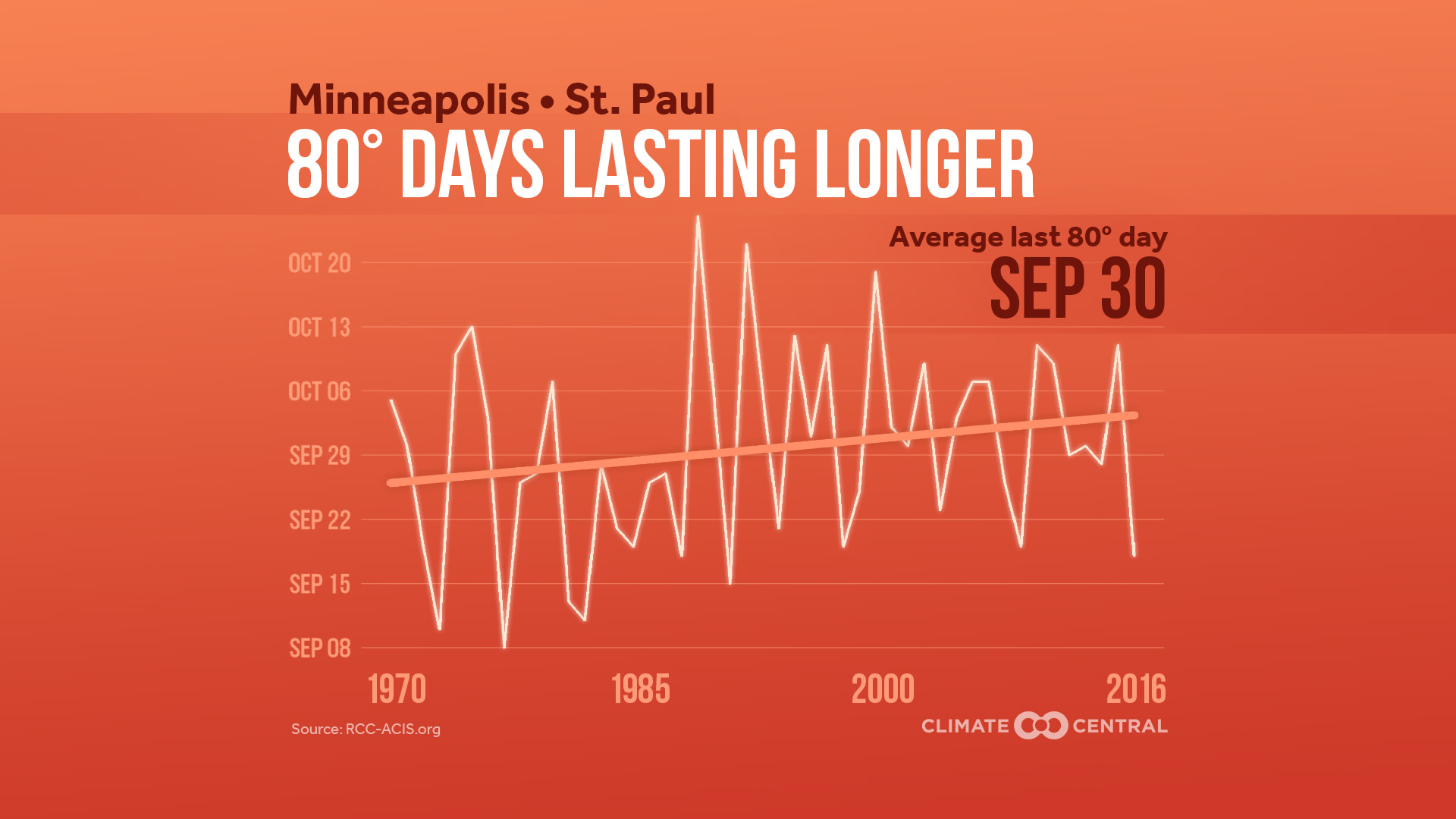While the West has been feeling the heat, fall-like temperatures dominated the eastern half of the country in August. But just as the calendar flips to astronomical fall, summer-like heat is making a return to many of those same places. So this week we examine the last annual occurrence of a hot, summer-like day in our Climate Matters cities. This is a complementary analysis to our spring report, when we looked at the first occurrence of a summer-like day each year.
While there is a lot of variation from year-to-year, that last summer-like day is coming later in the year for many of our U.S. cities. This effectively lengthens summer at the expense of the other seasons. Though the calendar continues to turn the same as ever, fall is arriving later while spring is arriving earlier on average — and in many cities, the high temperatures are reaching earlier into the year than they are lasting into the fall. All of this eats into wintertime, which is becoming shorter and less severe than in years past.
This shift in the seasons affects agriculture, health and the economy — differently for each of the four seasons. Longer and hotter summers take a toll on health and air quality, and enhance the wildfire season. The shifting shoulder seasons of fall and spring create ecological issues with mistiming of pollinators, changing growing seasons, and longer allergy seasons. Meanwhile, shorter and warmer winters allow more pests survive into the following season, increasing the odds of lower crop yields, and hurt towns whose economies rely on winter recreation activities such as skiing, snowmobiling and lake fishing.
METHODOLOGY: To determine each market’s threshold temperature of a summer-like day, we examined the frequency of maximum temperatures, in increments of 10°F (between 70°-110°F) for each market. The threshold temperature for each market was chosen at the highest of these increments occurring at least 15 times per year.
